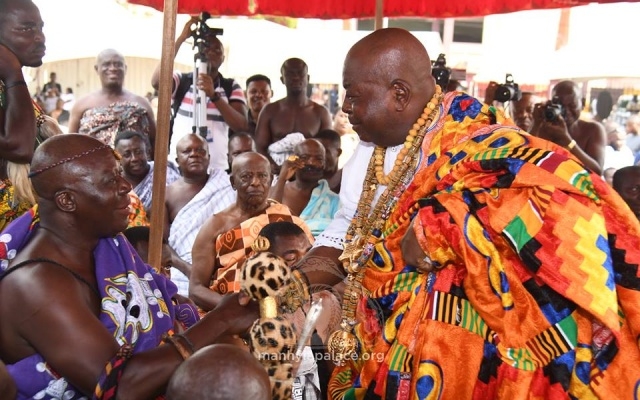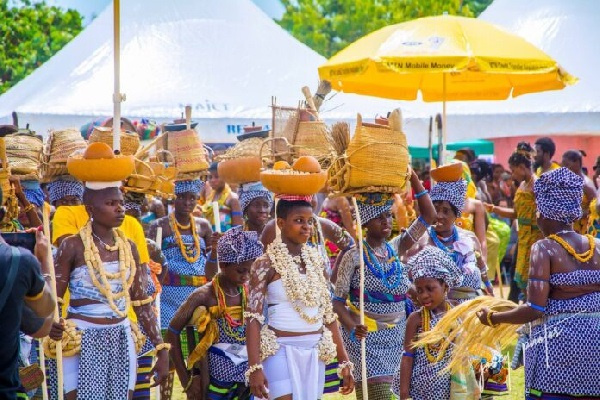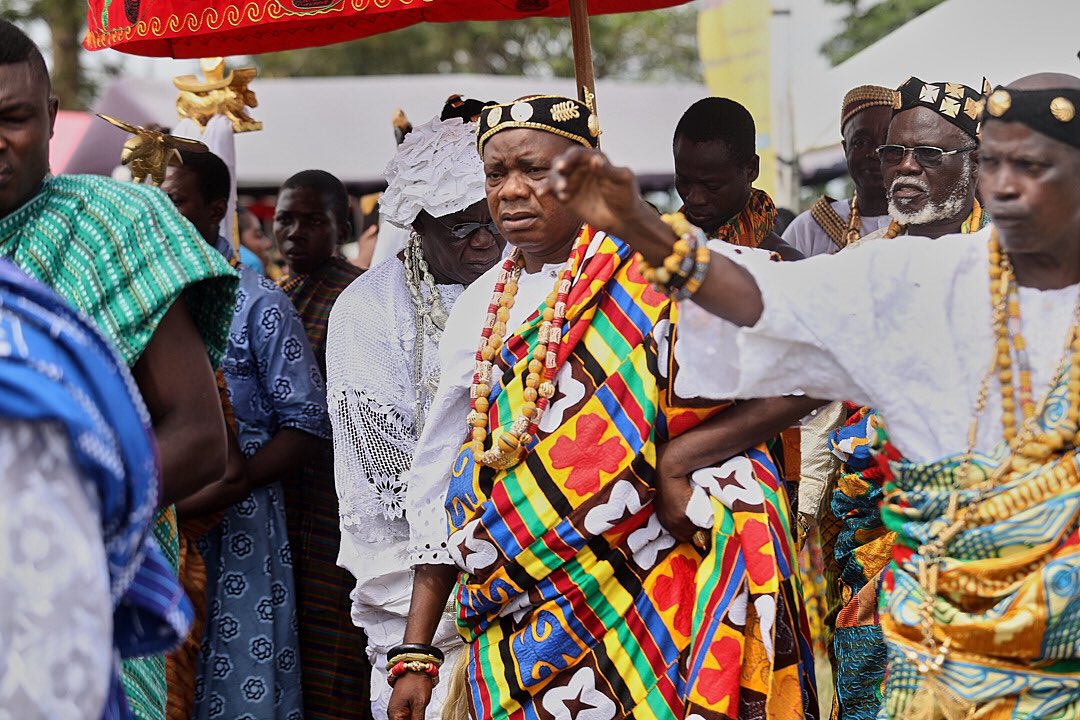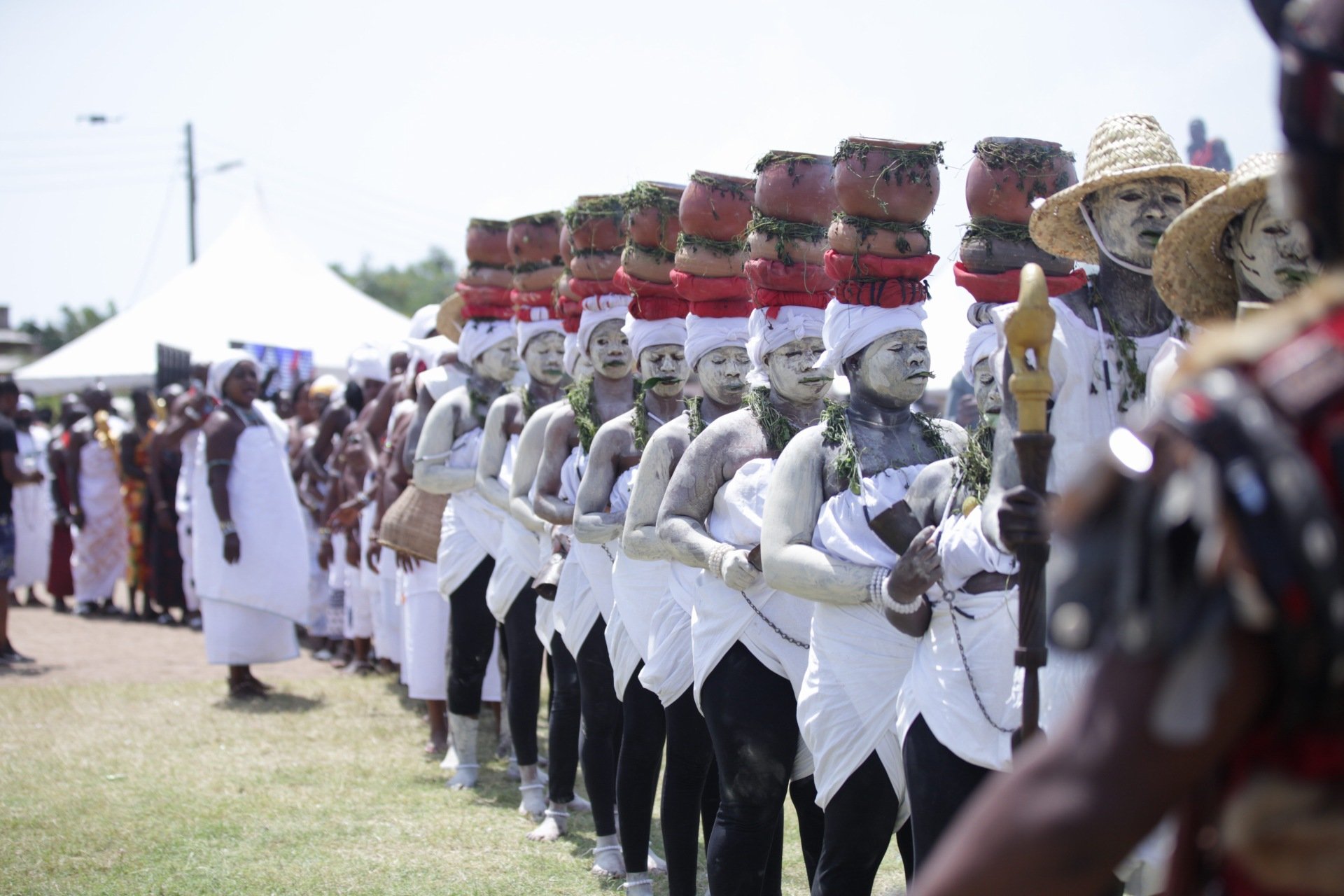Even though most Ghanaian people are proud of their heritage and tradition and are happy to tell you all about it, the capital Accra sometimes swallows these aspects of Ghanaian life – people are simply too busy following their daily activities, doing what needs to be done. Like any other big city in the world, it can get quite hectic here, and sometimes you forget about what Ghanaian culture truly looks like.
For this reason, my weekend in Keta was the perfect opportunity to experience the country’s traditional life. The fact that we went to Keta exactly on the weekend that the Hogbetsotso festival took place was not even planned. But on our way to the village, the woman that was sitting on the trotro seat in front of us told us about going to Keta because of the festival. We were instantly interested, of course, and after having rested and explored the beach a bit, we went to the festival on Saturday.

On our way to Hogbetsotso, we already stumbled upon many people who were dressed in colorful clothes, had painted skin, and all seemed really excited for the celebration to begin. The main spot where the festival took place could not be missed: For miles, you could hear the people and the drums. Some of the men also fired musketry shots in the air, which was quite loud. But soon, we would find out the reason for all the sounds and the excitement. A row of people was coming towards us, carrying large colorful parasols and dancing and chanting. In the middle of them all, there was a man sitting on a palanquin lifted by the people around him. A local woman who also attended the festival later told us that he was a chief celebrated on the occasion.

One thing that stood out to us at Hogbetsotso was the way people treated us. We were the only white people at the festival. From our life in Accra, we are used to negative encounters. Many times, we have been talked to inappropriately or even touched without our consent. While I am aware that most of these experiences are simply caused by curiosity, it can be overwhelming at times. All the more pleasant was what we experienced at Anloga. The overall mood was open and friendly, and people welcomed us to the festival, smiled at us, and tried to teach us words in Ewe.
The Hogbetsotso festival is celebrated by the chiefs and people of Anlo in the Volta region of Ghana. It takes place on the first Saturday of November every year. People are dressed in colorful traditional clothing, and everywhere you look, people are dancing, singing, and expressing their joy.

We went to Keta with the expectation to have a good time and explore the rich nature of the Volta region – and we did. Our resort was directly in the middle of the largest lagoon of Ghana’s coast and the sea, and the landscape there is simply beautiful. The beach could not have been more contrasting to those in Accra.
Everywhere you look, there is fine sand and palm trees with coconuts, and the trash problem that is so dominant in Ghana’s capital has barely reached Keta. During all my time here in Ghana, I have never seen a beach that was as clean as the one that I experienced on this weekend. The water was blue and clean and invited you for a swim. Still, we were almost alone at the beach. Instead of being crowded and swarmed by tourists, we had the beach all to ourselves and could enjoy the silence.

But what we were not expecting was to also attend one of the most important festivals of the Anlo culture. It was a pleasant surprise. All the colors and the stories that the people told us really brought a whole other side of Ghana to us.







